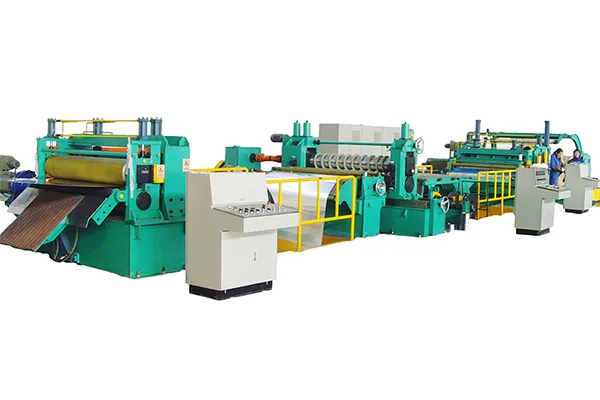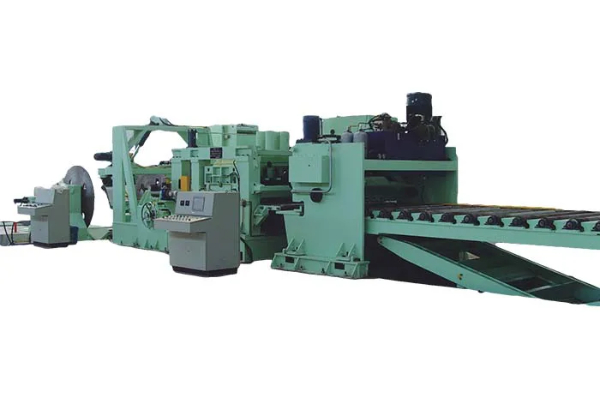
Comparing Manual vs. Automated Steel Roll Cutting Machines
- By:Metmac
- 2024-06-18
- 183
In the realm of steel fabrication, precision and efficiency are paramount. When it comes to cutting steel rolls, the choice between manual and automated machines can significantly impact production speed, accuracy, and safety. This article delves into the comparative advantages and disadvantages of these two cutting methods to help fabricators make informed decisions.
Accuracy and Precision
Automated steel roll cutting machines employ advanced technologies such as computer numerical control (CNC), which ensures exceptional accuracy and precision. The machines receive digital instructions that guide laser cutting heads or other cutting tools to follow precise contours and dimensions. This eliminates human error and guarantees consistent, high-quality cuts.
Manual steel roll cutting, on the other hand, relies on the skill and experience of the operator. While skilled operators can achieve satisfactory accuracy, it can be difficult to match the precision of automated machines. Operator fatigue or variations in cutting techniques can lead to inconsistencies in cut quality.
Speed and Efficiency
Automated steel roll cutting machines offer unparalleled speed and efficiency. The machines operate at high speeds, cutting through steel with remarkable precision. They can process large quantities of steel quickly and efficiently, saving time and labor costs.
Manual cutting, in contrast, is significantly slower and less efficient. Operators must manually guide cutting tools through the steel, which requires precision and time-consuming care. As fatigue sets in, cutting speed and accuracy may deteriorate.
Safety
Automated steel roll cutting machines enhance workplace safety by minimizing the risk of operator injury. The machines are designed with safety features such as guards, interlocks, and emergency stops. Operators can remain at a safe distance from the cutting zone, reducing the risk of accidents.
Manual cutting, on the other hand, poses greater safety risks. Operators must work in close proximity to sharp cutting tools, which increases the risk of lacerations or other injuries. Additionally, manual cutting involves physical exertion, which can lead to muscle strain or other ergonomic issues.
Cost Considerations
The initial investment in an automated steel roll cutting machine is typically higher than that of a manual machine. However, automated machines can provide significant cost savings in the long run. Their speed and efficiency translate into increased productivity, reduced labor costs, and minimized material waste.
Manual cutting, while less expensive upfront, may incur higher operating costs due to labor costs and the potential need for rework or scrap. Moreover, manual cutting can result in higher energy consumption compared to automated machines.
Conclusion
The choice between manual and automated steel roll cutting machines depends on the specific needs and priorities of the fabricator. Automated machines offer unmatched precision, speed, safety, and efficiency, making them an ideal choice for high-volume production and demanding applications. Manual cutting may be a suitable option for smaller operations or applications where accuracy and speed are less critical. Ultimately, the decision should be based on a thorough evaluation of factors such as production volume, quality requirements, safety considerations, and cost-effectiveness.
-
Sheet Metal Working Machines: The METMAC Advantage for Complete Fabrication Excellence
2025/12/03 -
Hydraulic Sheet Cutting Machine: Unmatched Power and Reliability for Demanding Fabrication by METMAC
2025/12/03 -
CNC Sheet Metal Bending Machine: The Pillar of Precision Fabrication with METMAC
2025/12/03 -
Laser Stainless Steel Cutting Machine: Precision, Purity, and Performance by METMAC
2025/12/03
-
Advanced Sheet Metal Rolling, Laser Cutting, and Folding Machines for Precision Fabrication
2025/10/31 -
High-Performance Sheet Metal Bending and Cutting Machines for Modern Fabrication
2025/10/31 -
High-Quality Sheet Metal Equipment for Sale: Efficient Solutions for Modern Manufacturing
2025/10/31 -
High-Performance Sheet Metal Equipment for Sale: Forming and Shearing Solutions for Modern Fabrication
2025/10/22
-
A Guide to the Latest Innovations in Sheet Metal Folding Machines
2024/11/29 -
Key Features to Consider When Investing in a Sheet Metal Folding Machine
2024/11/28 -
Enhancing Precision with Advanced Sheet Metal Folding Machines
2024/11/27 -
How to Choose the Right Sheet Metal Folding Machine for Your Workshop
2024/11/26







